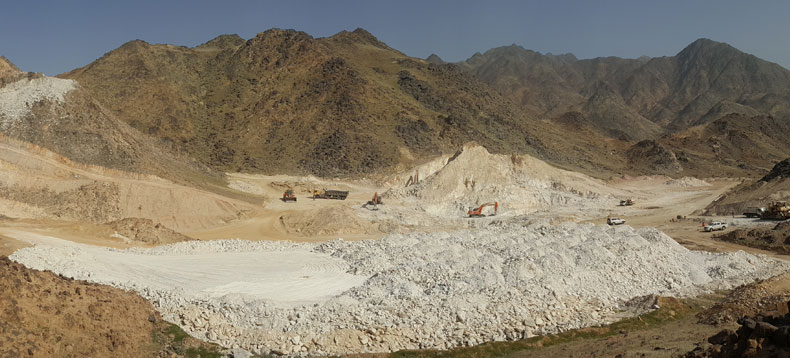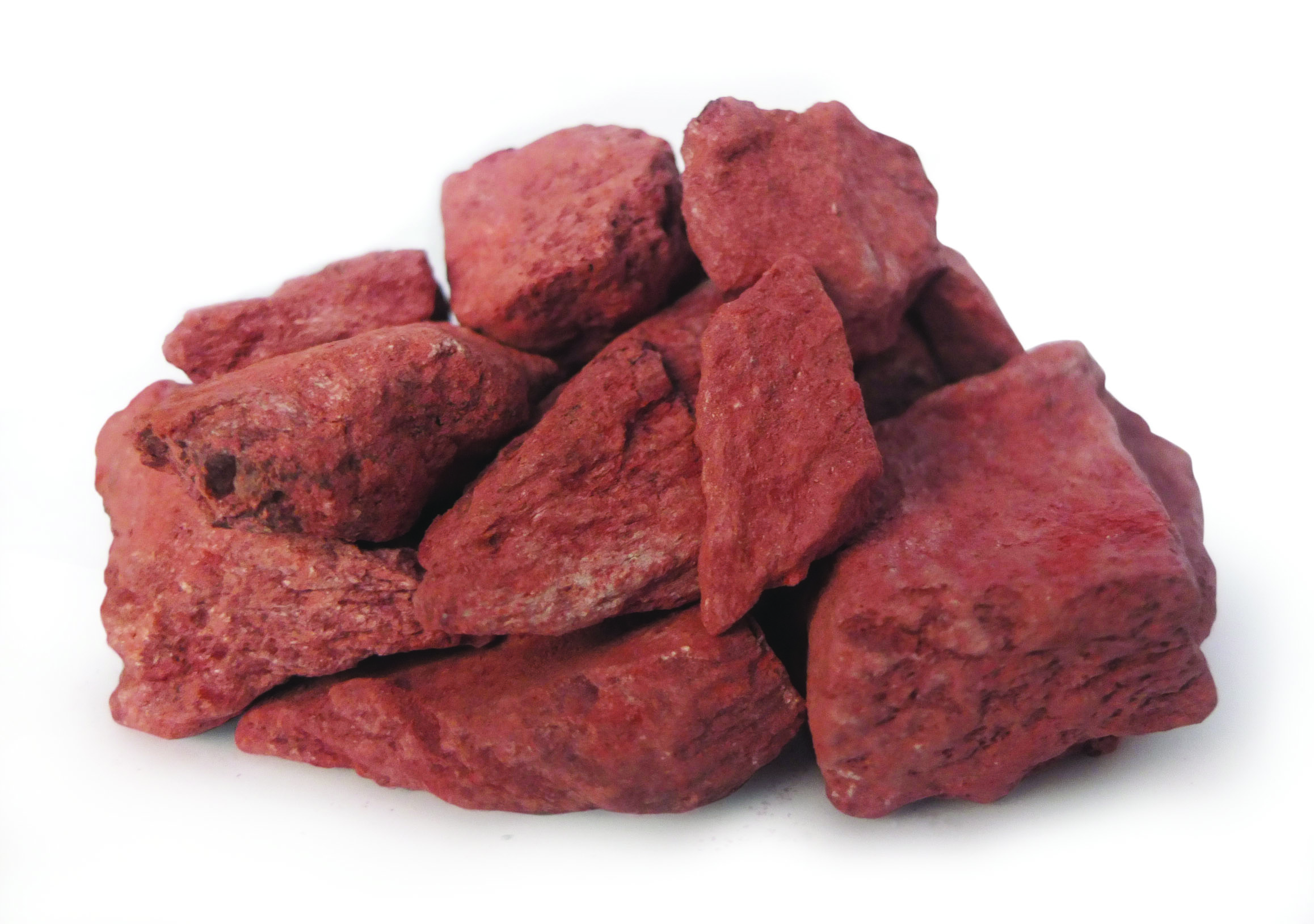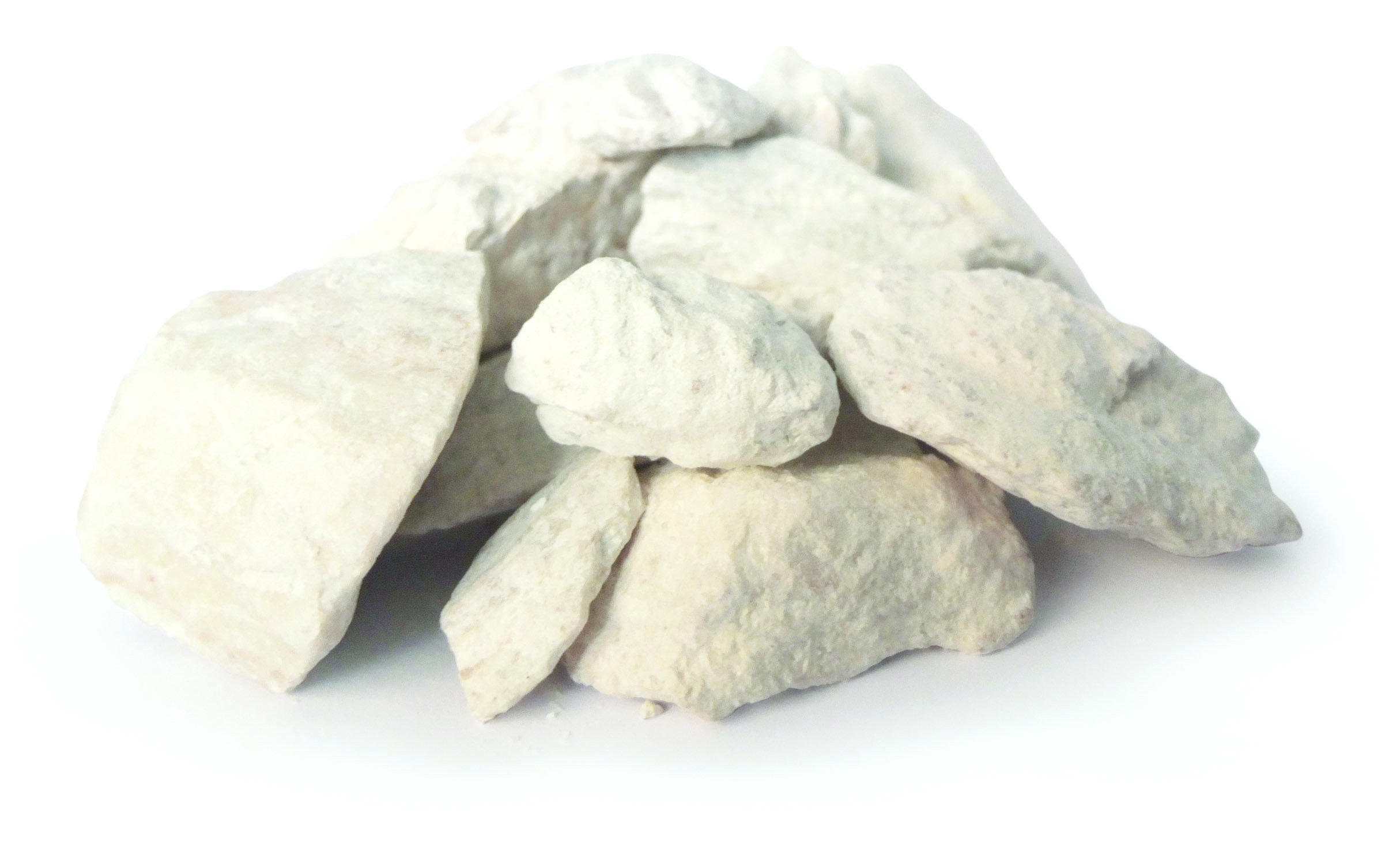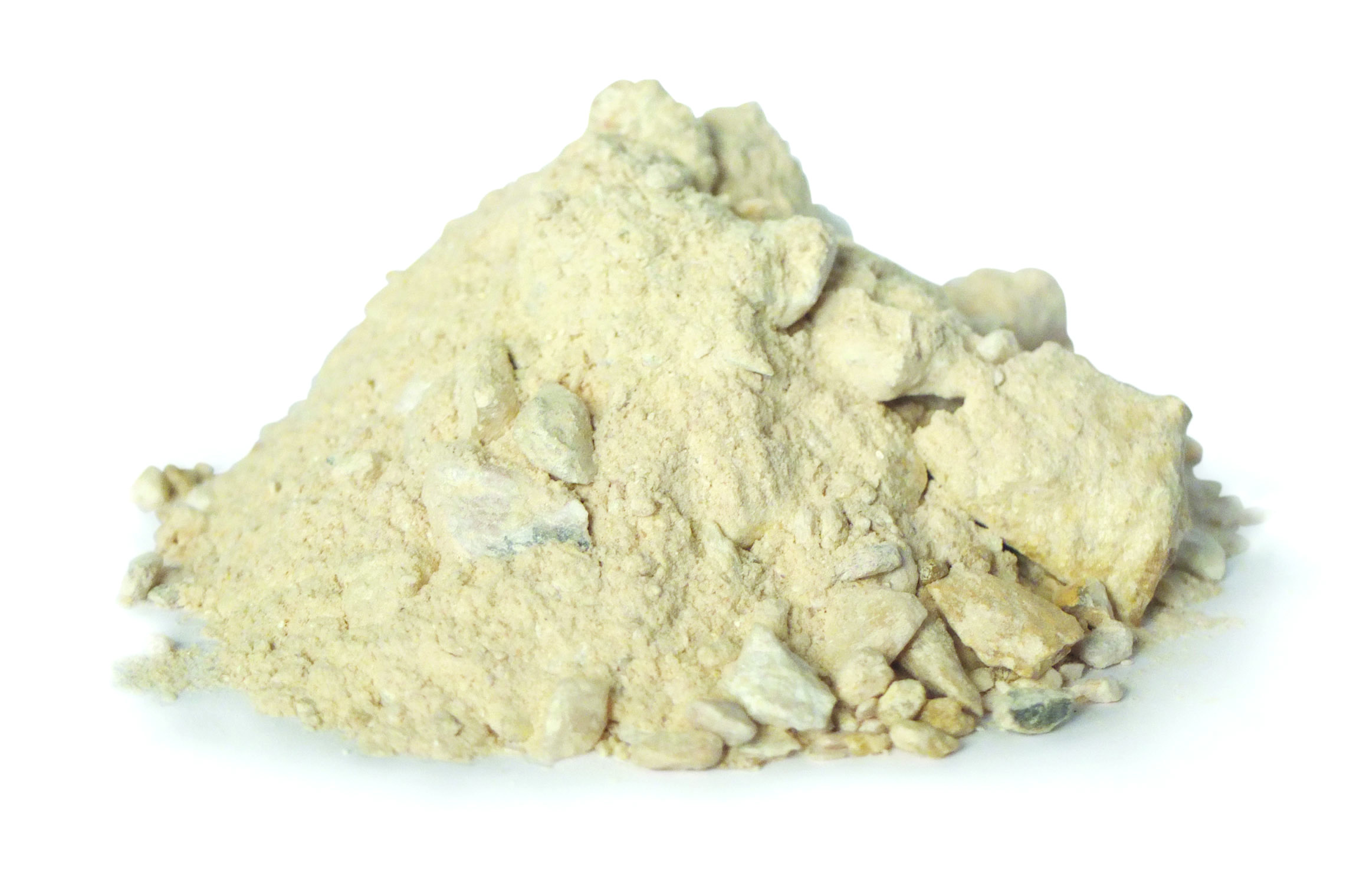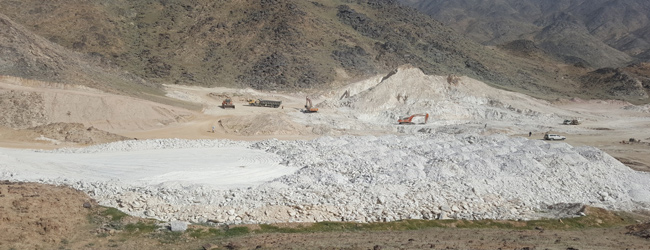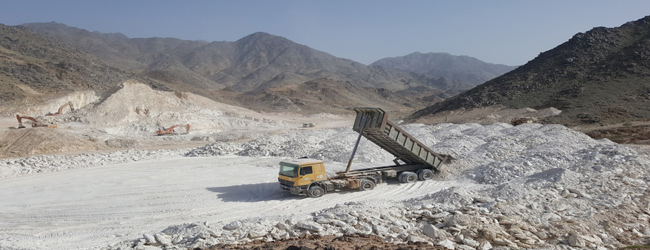Pyrophyllite
Due to the many uses and high global demand of Pyrophyllite, It's became one of the most important industrial minerals. It's composed of aluminum silicate hydroxide (Al2Si4O10(OH)2) It has a pearly shining , greasy texture and a hardness ranging between 1-1.5 on Mohs scale. Pyrophyllite has a specific gravity between 2.65 - 2.85. Raw material is characterized by resistance to deformation and heat shrinkage compared to other thermal materials (it has high heat resistance). It is found in white, red, yellow types.
Pyrophyllite Properties:
- Thermally stable.
- Heat insulation and resistance.
- Resists deformation at loads and creep.
- It has high resistance for thermal shocks.
- Chemically inactive.
- High melting point.
- Electrical insulation.
- It has medium hardness.
Pyrophyllite Mineralization in the world :
There are quarries for Pyrophyllite in KSA lockated in Yanbu city and there are similar quarries in Japan, Sauth Africa, North Carolina, Canada, Korea, Australia and India. All of them have economic importance and have been subject of investment since decades.
Why Pyrophyllite is used as alternative to Kaolinite, Talc & Bauxite ?
The low price of pyrophyllite compared with Kaolin and Talk , In addition, it provides the same specifications and results for the final product , these reasons makes pyrophyllite The best alternative for industries using those materials. Talc and kaolin are main raw materials in the industry and they are used effectively as a filler materials in industry. It's also widely used in the manufacturing of ceramics, paints, plastics and rubber.
Pyrophyllite is similar to Talc in appearance, properties and applications , The crystalline structure shows that the products that uses Pyrophyllite provide excellent properties in the plastics industry and are similar to those obtained by Talc. The optical properties and the refractive index are similar to Kaolin and this makes the pyrophyllite ideal to be used in Manufacture of paints, paper, plastics, adhesives ... etc.
Commercial Uses of Pyrophyllite:
-

White Cement Industry
- Used as an alternative to Kaolin in the manufacture of white cement to reduce the temperature of making clinker due to increased interaction in Pyrophyllite , and the clinker formulations based on Pyrophyllite generally have an advantage when compared with clinker made up from Kaolin and Silica.
- Maintains the degree of whiteness levels in excess of 90% in white cement.
- Used in the manufacturing of black cement to equate the percentage of chemical elements in the clinker.
-

Black Cement Industry
- Used in manufacturing of black cement to equate the chemical composition of the clinker as alternatiue to bauxite.
-

Ceramics and Porcelain Industry
- Used in the ceramic industry to reduce the temperature required for production.
- Used in the manufacture of porcelain, tiles, sanitary ware, food dishes and whiteware to increase the durability of the final product.
-

Refractories Industry
- Used in the manufacture of bricks and ceramics, which is exposed to very high temperatures in melting furnaces to resist corrosion by molten metals and slag, and also resist thermal shock, deformation caused thermal crawling.
- Used in constructing and lining of melting furnaces.
- Used in manufacturing of refractory mortar.
- Used in the industry of fire resistance materials.
- Added to the clay to reduce thermal expansion during burning.
- Used in foundries to make molds to resist the high temperature of melted materials and to prevent the penetration of molten materials to the mold.
-

Glass and Fiberglass Industry
- Used in fiberglass manufacturing.
- Used to improve the durability of glass and glass wool.
- Used to improve glass transparency.
-

Another Uses
- Used in the manufacture of plastic and chalk industry.
- It has multiple industrial uses when added to other materials as in the manufacture of pesticides and detergents.
- Used as a filler material to absorb or remove bacteria from aqueous solutions.
- Used as a filler material in manufacturing of paper, painting and rubber.
- Pyrophyllite has medical uses to removal of toxins from the intestinal tract after mixing with activated charcoal.
- Used in the manufacture of cosmetics to remove the detox, purify and renew the skin.
(XRF) Analysis for the different types of Pyrophyllite from SAMIROCK Quarry in KSA located in Yanbu:
|
Components (Calculated as oxides) % |
Pyrophyllite Types |
|||
|
White |
Red |
yellow |
Mixed |
|
|
Silicon dioxide (SiO2) |
72.85 |
62.15 |
67.61 |
71.18 |
|
Aluminum oxide (Al2O3) |
20.92 |
18.9 |
24.06 |
19.97 |
|
Iron Oxide (Fe2O3) |
0.53 |
6.46 |
2.23 |
1.22 |
|
Magnesium oxide (MgO) |
0.06 |
0.07 |
0.25 |
0.25 |
|
Calcium oxide (CaO) |
0.21 |
0.92 |
0.13 |
0.76 |
|
Sodium oxide (Na2O) |
0.06 |
0.28 |
0.03 |
0.45 |
|
Potassium oxide (K2O) |
0.15 |
1.63 |
0.04 |
0.32 |
|
Titanium dioxide (TiO2) |
0.65 |
0.78 |
0.77 |
0.64 |
|
Diphosphoruspent oxide (P2O5) |
0.17 |
0.08 |
0.15 |
0.14 |
|
sulfur trioxide (SO3) |
0.12 |
1.45 |
0.11 |
0.11 |
|
Ignition loss (LOI) |
4.45 |
7.22 |
4.62 |
4.39 |
